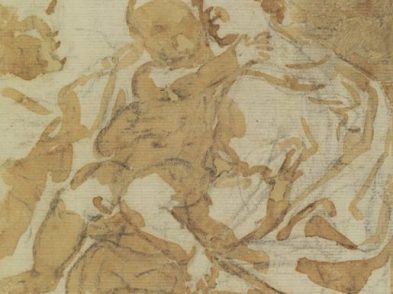Il Palmerino, first cited in Giorgio Vasari’s Lives of Artists in 1420 as the home to goldsmith Ottaviano di Duccio, is the first Florentine stop on the Via degli Dei, an ancient Etruscan trail for pilgrims that follows the curve of the Apennines to Bologna. Slow-travel hikers, many of whom brave the trail as a coming-of-age event, find refuge there, as do art and literature lovers. Il Palmerino was formerly home to artist Lola Costa and British novelist Vernon Lee, and is now a cultural center, with a particular emphasis on art by women in the 1900s.
Its upcoming summertime exhibition will kick off on June 6 (admission is free) and features 20th-century Bolognese artist Lea Colliva, celebrated as one of the most experimental artists of her time. This 20-piece show entitled Lea Colliva: An Artist on the Pathway of the Gods spotlights her over 50-year career and encompasses traditional landscapes, Fauvist-style portraiture and domestic scenes. As a colorist painter with a love for Expressionism, Colliva was deeply criticized by the Fascist regime for not meeting its artistic expectations once the Nazis had banned emotionally-charged Expressionism as “degenerative”.
The exhibition’s centerpiece is an early watercolor-and-ink self-portrait that Colliva authored in the 1920s. It was restored this spring as part of a pilot project called “Women Who Drew”, brainchild of Advancing Women Artists, Il Palmerino and the Atelier degli Artigianelli, which continues to bring ladies of different generations and nationalities into the latter’s Oltrarno restoration studio to restore works on paper by women, with the intent of creating a Florence archive of art of works on paper, including drawings, photography and graphic art.
“Paper is a medium that has always been easily accessible to women artists,” says restorer Beatrice Cuniberti, “even noblewomen who practiced art as a cultural or educational pastime. The idea of considering drawings completed artwork in their own right—and not merely a form of practice—is a relatively recent one and very much representative of 20th-century creativity.”
Colliva is an example of this phenomenon, as she was recognized primarily for her drawing skills that earned the self-taught artist a post at Bologna’s Accademia teaching anatomical drawing on “sheer fame”. Critics during Colliva’s era compared her art to that of Leonardo da Vinci! Though the recognition she earned in her lifetime has declined in recent years, readers may recognize her name, as a “Flood Lady” who donated her work to the city after the Arno’s 1966 flooding.
A calendar of cultural events will continue at Il Palmerino until the middle of September, including poetry readings and art-inspired conferences en plein air.
On June 23, 24, 25 and 26, the association will be organizing a trek through the Apennines, dotted with mountain peaks named for Greek divinities (hence the trail’s name). Before reaching Bologna and its iconic Neptune Fountain, Florence hikers will stop in the hillside town of Monzuno, which hosts l’Ospitale, Colliva’s creative home, once a pilgrims’ hostel turned magnet for artists of her time.
For more information, visit www.advancingwomenartists.org.









